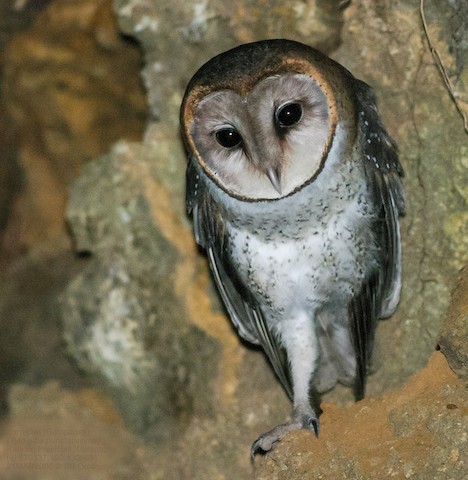Birdfinding.info ⇒ Globally endangered and uncommon in its limited range. Most often seen in the highlands of Isla Santa Cruz, where it can be found at several locally-known roosting sites in lava tubes and agricultural outbuildings.
Galápagos Barn Owl
Tyto punctatissima
Endemic to the Galápagos Archipelago, where it is resident on Santa Cruz, Isabela, Fernandina, Santiago, San Cristóbal, and Española islands.
Identification
A small, dark, heavily spotted barn owl. Much smaller than the continental American Barn Owl, which occasionally wanders to the Galápagos.

Galápagos Barn Owl, male showing dark upperparts and white underparts with irregular black-and-white markings. (Rancho El Chato II, Isla Santa Cruz, Galápagos; September 11, 2022.) © Louis Hoeniger
The upperparts are mostly gray or gray-brown with round white spots.
The underparts differ noticeably between the sexes. Males are mostly white below with irregular black-and-white markings.
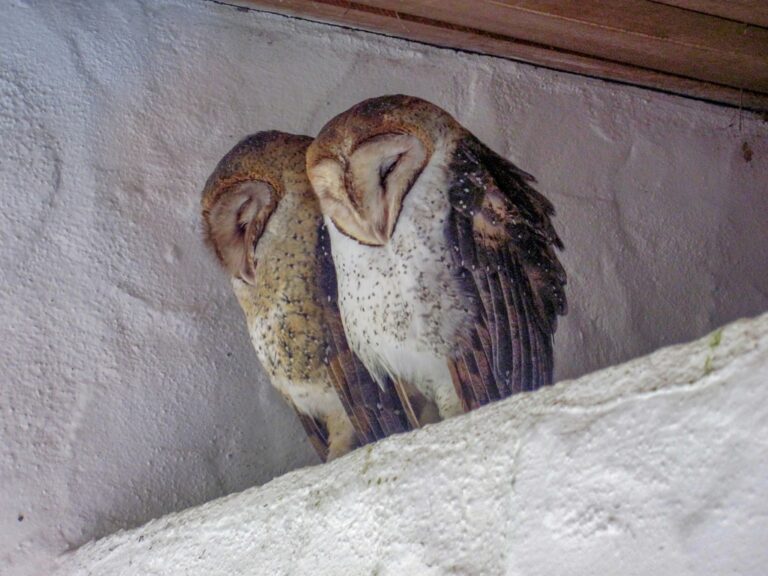
Galápagos Barn Owl, female and male. (Isla Santa Cruz, Galápagos; February 17, 2010.) © Shawn O’Donnell
Females are mostly orangish-buffy below with denser black-and-white markings.
The facial disk often appears pinkish-brown or vinaceous, especially on females, but also varies from white to brownish or ash-gray.
The upper and outer rim of the facial disk often appears rich golden-brown. The lower rim usually appears blackish.
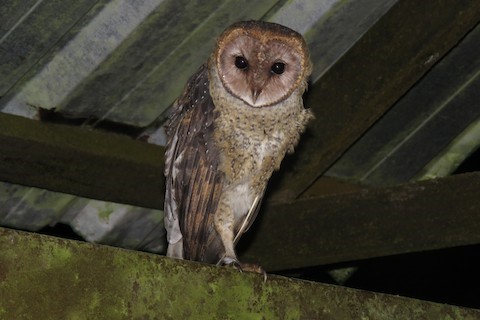
Galápagos Barn Owl, female showing vinaceous facial disk and heavily marked buffy underparts. (Cerro Mesa Ecological Reserve, Isla Santa Cruz, Galápagos; March 21, 2022.) © Shane McPherson
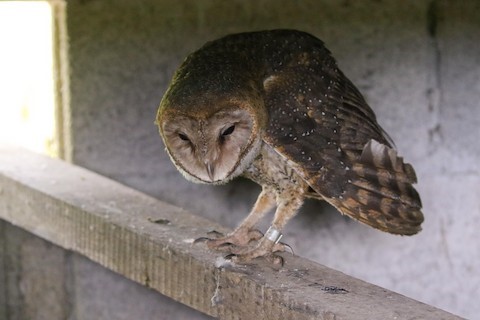
Galápagos Barn Owl, female showing dark upperparts with white spots. (Rancho Primicias, Isla Santa Cruz, Galápagos; June 27, 2019.) © Michael O’Brien
Voice. Typical call is a brief, thin hiss, each lasting about one-third of a second, repeated frequently a few seconds apart:
Also reportedly give a “hoarse, shrill and rather high-pitched long kreee . . .” (König & Weick 2008)
Notes
Monotypic species. Traditionally classified as a subspecies of the Barn Owl (T. alba), but more recently treated as a subspecies of the American Barn Owl (T. furcata) by several taxonomic authorities.
Provisionally treated as a separate species here because both recent guidebooks to the owls of the world, König and Weick (2008) and Mikkola (2012), recognize it as such. It is significantly smaller—about half the weight—than continental American Barn Owls, and has distinctive plumage characteristics.
More Images of the Galápagos Barn Owl
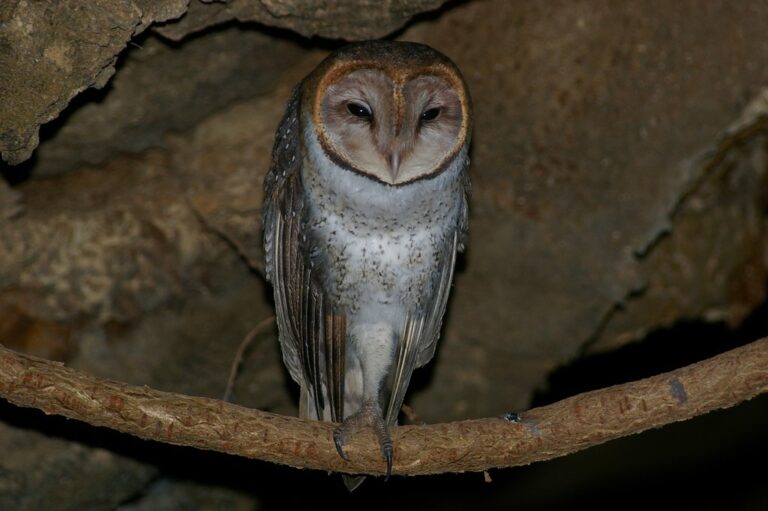
Galápagos Barn Owl, male. (Isla Santa Cruz, Galápagos; June 19, 2006.) © Don Johnston
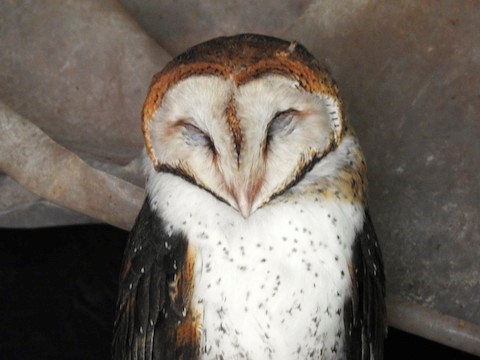
Galápagos Barn Owl, an exceptionally pale male. (Cerro Mesa Ecological Reserve, Isla Santa Cruz, Galápagos; April 12, 2016.) © Cindy Burley
References
Aliabadian, M., N. Alaei-Kakhki, O. Mirshamsi, V. Nijman, and A. Roulin. 2016. Phylogeny, biogeography, and diversification of barn owls (Aves: Strigiformes). Biological Journal of the Linnean Society 119:904-918.
BirdLife International. 2019. Tyto alba (amended version of 2016 assessment). The IUCN Red List of Threatened Species 2019: e.T22688504A155542941. https://dx.doi.org/10.2305/IUCN.UK.2019-3.RLTS.T22688504A155542941.en. (Accessed September 8, 2023.)
eBird. 2023. eBird: An online database of bird distribution and abundance. Cornell Lab of Ornithology, Ithaca, N.Y. http://www.ebird.org. (Accessed September 8, 2023.)
Enríquez, P.L., K. Eisermann, H. Mikkola, and J.C. Motta-Junior. 2017. A Review of the Systematics of Neotropical Owls (Strigiformes), Neotropical Owls: Diversity and Conservation (P.L. Enríquez, ed.). Springer International Publishing, Cham, Switzerland.
iNaturalist. 2023. https://www.inaturalist.org/. (Accessed September 8, 2023.)
König, C., and F. Weick. 2008. Owls of the World (Second Edition). Yale University Press.
Mikkola, H. 2013. Owls of the World: A Photographic Guide (Second Edition). Firefly Books, London.
Xeno-Canto. 2023. American Barn Owl – Tyto furcata. https://xeno-canto.org/species/Tyto-furcata. (Accessed September 8, 2023.)
